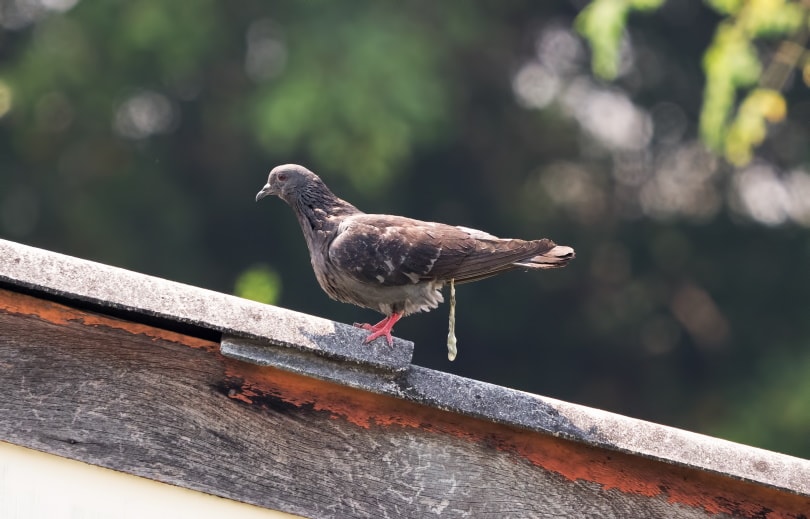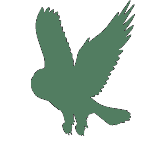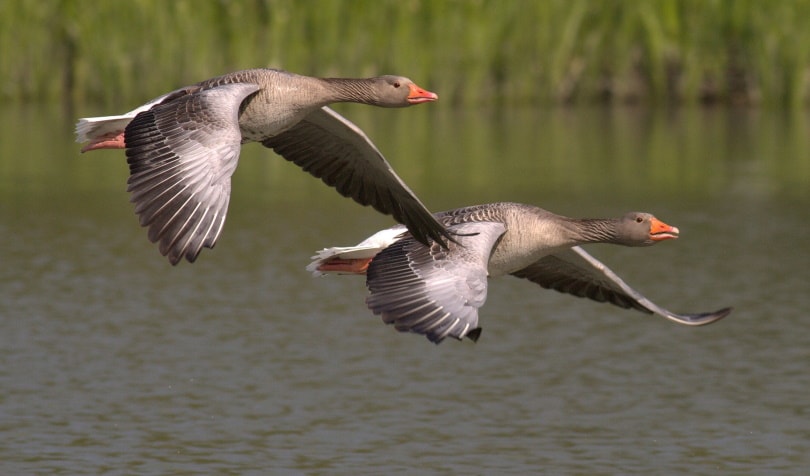Why Is Bird Poop White? What You Need to Know!
Last Updated on

Birds and humans are obviously very different animals. Birds can fly where humans are stuck walking. Birds have feathers and humans are stuck with hair. Humans have bladders and urethras, birds do not. This difference means that while both types of animals can excrete excess nitrogen found in blood cells, we do it very differently. It is the reason that birds don’t pee in the sense that we would normally think of, and it is also the cause of their poop being white.
This is also part of the reason that bird poop is so difficult to clean off cars and also why it was once considered a potent and effective fertilizer.

Bird Poop
Because birds don’t have kidneys, their bodies have a different way of dealing with excess nitrogen. It is turned into uric acid, which is then passed to the cloaca, where it combines with hard fecal matter and creates what is a gooey paste. The liquid and the solids are then exhausted through the cloaca at the same time.
When you see bird poop on the floor, or especially on dark-colored cars, you will notice that it has a dark center and a white outer. The dark center is the hard fecal mass while the white outer ring is the pasty uric acid.

Pasty Poop
It is also the pastiness of the uric acid combined with the solid of the poop that makes it so tough to get bird poop off cars, floors, walls, and other surfaces. The paste hardens and solidifies, which means that it effectively needs scraping off, and the longer it’s left, the worse things get.
The Exceptions
There are some exceptions to this rule. The emu, for example, actually has a bladder and when it excretes waste, it first expels liquid-like urine before then defecating and getting rid of the solid poop. Both come out of the same hole, and one is usually followed by the other, but it is different from how other birds do it.
Pigeons and geese are also known to do things differently. Most birds are perfectly capable of peeing and pooing while flying. It means that they don’t have to stop and land if they need to expel waste. Pigeons and geese fly in such a way that their feet are positioned right under their cloacal hole. If they were to poo and pee while flying, it would be all over their feet. Rather than having to adjust their foot position, these species of bird instead wait until they are on solid ground to do their business. You will see pigeon poo on and below ledges that they sit on, as well as on the floor in areas where they congregate in the hope of getting food.


Why Is Bird Poop White?
Only the outer section of bird poop is actually white, while the hard central section is brown or a brownish color. This white outer ring is more of a paste than a solid or liquid, and consists of uric acid, which is formed by the bird as a means to get rid of excess and unwanted nitrogen in the blood. It is the avian equivalent of urine.
Looking for more interesting bird articles? Take a look at:
- 5 Birds with the Largest Wingspans in the World (With Pictures)
- 8 Bird of Prey Species in Florida (With Pictures)
- What Birds Lay Blue Eggs and Why Does It Happen?
Featured Image Credit By Cherdchai Chaivimol, Shutterstock
Table of Contents
About the Author Robert Sparks
Robert’s obsession with all things optical started early in life, when his optician father would bring home prototypes for Robert to play with. Nowadays, Robert is dedicated to helping others find the right optics for their needs. His hobbies include astronomy, astrophysics, and model building. Originally from Newark, NJ, he resides in Santa Fe, New Mexico, where the nighttime skies are filled with glittering stars.
Related Articles:
What Is the Best Binocular Magnification for Hunting? Optical Features Explained
How to Clean a Refractor Telescope: Step-by-Step Guide
How to Clean a Telescope Eyepiece: Step-by-Step Guide
How to Clean a Rifle Scope: 8 Expert Tips
Monocular vs Telescope: Differences Explained (With Pictures)
What Is a Monocular Used For? 8 Common Functions
How to Clean a Telescope Mirror: 8 Expert Tips
Brightfield vs Phase Contrast Microscopy: The Differences Explained
